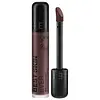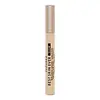Sephora Collection Best Skin Ever Multi-Use Concealer Versus Sephora Collection Best Skin Ever Glow Concealer
What's inside
What's inside
 Key Ingredients
Key Ingredients

 Benefits
Benefits

 Concerns
Concerns

 Ingredients Side-by-side
Ingredients Side-by-side

Water
Skin ConditioningDimethicone
EmollientCI 77499
Cosmetic ColorantCI 77491
Cosmetic ColorantCI 77492
Cosmetic ColorantPropylene Glycol Dicaprylate/Dicaprate
EmollientGlycerin
HumectantIsododecane
EmollientLauryl Polyglyceryl-3 Polydimethylsiloxyethyl Dimethicone
Skin ConditioningPropanediol
SolventDimethicone/Vinyl Dimethicone Crosspolymer
Skin ConditioningPentylene Glycol
Skin ConditioningButylene Glycol
HumectantPaeonia Lactiflora Root Water
MaskingSodium Chloride
MaskingDimethicone/Polyglycerin-3 Crosspolymer
CleansingStearalkonium Hectorite
Gel FormingPhenoxyethanol
PreservativeTocopheryl Acetate
AntioxidantTriethoxysilylethyl Polydimethylsiloxyethyl Hexyl Dimethicone
Skin ConditioningCaesalpinia Spinosa Fruit Extract
Skin ProtectingPropylene Carbonate
SolventAspergillus Ferment
Skin ConditioningPanax Ginseng Extract
AntioxidantSodium Hyaluronate
HumectantKappaphycus Alvarezii Extract
Skin ConditioningDipropylene Glycol
HumectantSodium Citrate
BufferingTocopherol
AntioxidantWater, Dimethicone, CI 77499, CI 77491, CI 77492, Propylene Glycol Dicaprylate/Dicaprate, Glycerin, Isododecane, Lauryl Polyglyceryl-3 Polydimethylsiloxyethyl Dimethicone, Propanediol, Dimethicone/Vinyl Dimethicone Crosspolymer, Pentylene Glycol, Butylene Glycol, Paeonia Lactiflora Root Water, Sodium Chloride, Dimethicone/Polyglycerin-3 Crosspolymer, Stearalkonium Hectorite, Phenoxyethanol, Tocopheryl Acetate, Triethoxysilylethyl Polydimethylsiloxyethyl Hexyl Dimethicone, Caesalpinia Spinosa Fruit Extract, Propylene Carbonate, Aspergillus Ferment, Panax Ginseng Extract, Sodium Hyaluronate, Kappaphycus Alvarezii Extract, Dipropylene Glycol, Sodium Citrate, Tocopherol
Water
Skin ConditioningCI 77891
Cosmetic ColorantDicaprylyl Ether
EmollientIsododecane
EmollientSqualane
EmollientPolyglyceryl-6 Polyhydroxystearate
EmulsifyingZinc Stearate
Cosmetic ColorantCaprylic/Capric/Succinic Triglyceride
EmollientVp/Hexadecene Copolymer
Octyldodecanol
EmollientInulin
Skin ConditioningMagnesium Sulfate
Polyglyceryl-6 Polyricinoleate
EmulsifyingPropanediol
SolventMica
Cosmetic ColorantAlpha-Glucan Oligosaccharide
CleansingGlycerin
HumectantCI 77492
Cosmetic Colorant1,2-Hexanediol
Skin ConditioningSodium Dehydroacetate
PreservativeDisteardimonium Hectorite
StabilisingHydroxyacetophenone
AntioxidantCI 77491
Cosmetic ColorantSodium Hyaluronate
HumectantLecithin
EmollientPropylene Carbonate
SolventCI 77499
Cosmetic ColorantStearic Acid
CleansingTocopherol
AntioxidantAscorbyl Palmitate
AntioxidantCitric Acid
BufferingWater, CI 77891, Dicaprylyl Ether, Isododecane, Squalane, Polyglyceryl-6 Polyhydroxystearate, Zinc Stearate, Caprylic/Capric/Succinic Triglyceride, Vp/Hexadecene Copolymer, Octyldodecanol, Inulin, Magnesium Sulfate, Polyglyceryl-6 Polyricinoleate, Propanediol, Mica, Alpha-Glucan Oligosaccharide, Glycerin, CI 77492, 1,2-Hexanediol, Sodium Dehydroacetate, Disteardimonium Hectorite, Hydroxyacetophenone, CI 77491, Sodium Hyaluronate, Lecithin, Propylene Carbonate, CI 77499, Stearic Acid, Tocopherol, Ascorbyl Palmitate, Citric Acid
Ingredients Explained
These ingredients are found in both products.
Ingredients higher up in an ingredient list are typically present in a larger amount.
Ci 77491 is also hydrated iron III oxide. It's sole purpose is to give a red/pink hue to products.
Iron III oxides are classified as inorganic chemicals for coloring.
Synthetically created Ci 77491 is considered safer than those naturally found. This is because the synthetically created version may contain less impurities. Iron oxides are generally non-toxic and non-allergenic.
Learn more about CI 77491Ci 77492 is also hydrated iron III oxide. It's sole purpose is to give a yellow hue to products.
Iron III oxides are classified as inorganic chemicals for coloring.
Synthetically created Ci 77492 is considered safer than those naturally found. This is because the synthetically created version may contain less impurities. Iron oxides are generally non-toxic and non-allergenic.
Learn more about CI 77492Ci 77499 is also hydrated iron III oxide. It is created from mixing red and black iron oxides. This helps give shades of darkness to a product.
Iron III oxides are classified as inorganic chemicals for coloring.
Glycerin is already naturally found in your skin. It helps moisturize and protect your skin.
A study from 2016 found glycerin to be more effective as a humectant than AHAs and hyaluronic acid.
As a humectant, it helps the skin stay hydrated by pulling moisture to your skin. The low molecular weight of glycerin allows it to pull moisture into the deeper layers of your skin.
Hydrated skin improves your skin barrier; Your skin barrier helps protect against irritants and bacteria.
Glycerin has also been found to have antimicrobial and antiviral properties. Due to these properties, glycerin is often used in wound and burn treatments.
In cosmetics, glycerin is usually derived from plants such as soybean or palm. However, it can also be sourced from animals, such as tallow or animal fat.
This ingredient is organic, colorless, odorless, and non-toxic.
Glycerin is the name for this ingredient in American English. British English uses Glycerol/Glycerine.
Learn more about GlycerinIsododecane is a fragrance, emollient, and solvent.
As an emollient, it helps your skin stay soft and hydrated. Emollients help trap moisture into your skin.
Isododecane's role as a solvent makes it a great texture enhancer. It spreads smoothly on skin and does not leave a sticky feeling behind. Isododecane also helps prevent color transfer in makeup products.
Isododecane is not absorbed into skin.
Learn more about IsododecanePropanediol is an all-star ingredient. It softens, hydrates, and smooths the skin.
It’s often used to:
Propanediol is not likely to cause sensitivity and considered safe to use. It is derived from corn or petroleum with a clear color and no scent.
Learn more about PropanediolThis ingredient is a solvent. It helps dissolve active ingredients and alter the texture of products.
Propylene Carbonate is commonly used in makeup and with clay, such as montmorillonite or bentonite.
Studies show this ingredient to be safe for cosmetics. When it is undiluted, it can cause skin irritation. (It is always diluted in skincare and makeup). This ingredient is water-soluble.
Propylene Carbonate is created from propylene glycol and carbonic acid.
Learn more about Propylene CarbonateSodium Hyaluronate is hyaluronic acid's salt form. It is commonly derived from the sodium salt of hyaluronic acid.
Like hyaluronic acid, it is great at holding water and acts as a humectant. This makes it a great skin hydrating ingredient.
Sodium Hyaluronate is naturally occurring in our bodies and is mostly found in eye fluid and joints.
These are some other common types of Hyaluronic Acid:
Learn more about Sodium HyaluronateTocopherol (also known as Vitamin E) is a common antioxidant used to help protect the skin from free-radicals and strengthen the skin barrier. It's also fat soluble - this means our skin is great at absorbing it.
Vitamin E also helps keep your natural skin lipids healthy. Your lipid skin barrier naturally consists of lipids, ceramides, and fatty acids. Vitamin E offers extra protection for your skin’s lipid barrier, keeping your skin healthy and nourished.
Another benefit is a bit of UV protection. Vitamin E helps reduce the damage caused by UVB rays. (It should not replace your sunscreen). Combining it with Vitamin C can decrease sunburned cells and hyperpigmentation after UV exposure.
You might have noticed Vitamin E + C often paired together. This is because it is great at stabilizing Vitamin C. Using the two together helps increase the effectiveness of both ingredients.
There are often claims that Vitamin E can reduce/prevent scarring, but these claims haven't been confirmed by scientific research.
Learn more about TocopherolWater. It's the most common cosmetic ingredient of all. You'll usually see it at the top of ingredient lists, meaning that it makes up the largest part of the product.
So why is it so popular? Water most often acts as a solvent - this means that it helps dissolve other ingredients into the formulation.
You'll also recognize water as that liquid we all need to stay alive. If you see this, drink a glass of water. Stay hydrated!
Learn more about Water